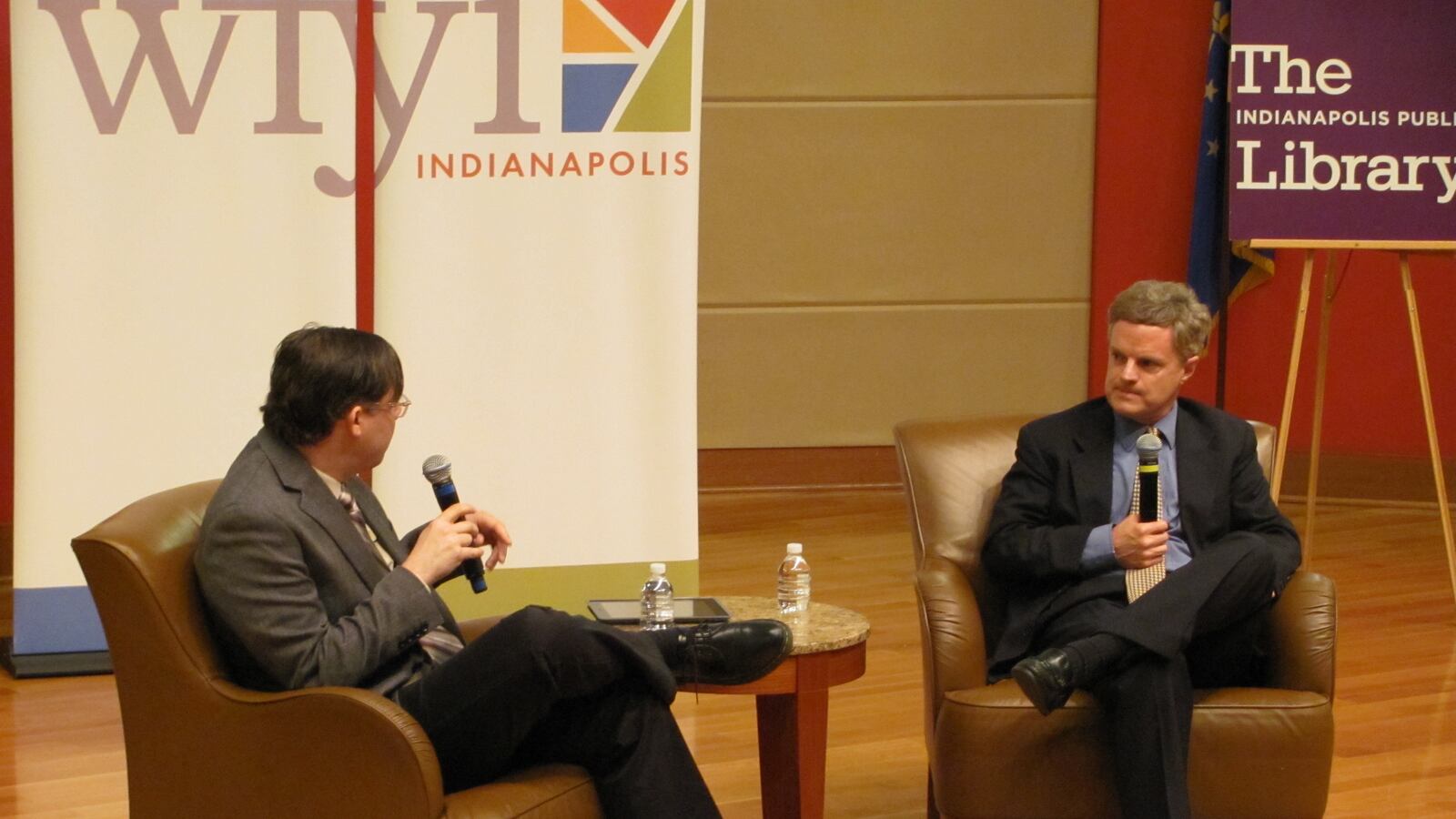Shelbyville once was the poster child for the nation’s high school dropout crisis.
When the small Southern Indiana school district was prominently featured in Time Magazine’s 2006 Dropout Nation cover story, just 78 percent of its students were graduating high school on time.
Last year, the district had raised its graduation rate to 98 percent.
How’d they accomplish it?
John Bridgeland, one of the nation’s leading researchers on high school dropouts and graduation, said Tuesday at the Indianapolis Public Library that “the secret sauce” to improving the nationwide graduation rate lies in districts like Shelbyville that change their culture dramatically to focus on early detection and intervention. The event was sponsored by WFYI.
“There’s a cultural change in these places,” said Bridgeland, who is CEO of Civic Enterprises, the national organization behind the American Graduate Project, and has served as an adviser to two U.S. presidents. “The relentlessness in superintendents and teachers to get students the help they need.”
Bridgeland’s goal through the American Graduate Project, a national effort to increase the number of high school graduates, is to get to a 90 percent high school graduation rate by 2020. Currently, the national four-year graduation rate stands at 81.9 percent.
The 90 percent high school graduation rate goal is important, Bridgeland said, because of its implications: High school dropouts are more than twice as likely to live in poverty than college graduates. They’re also more likely to be incarcerated.
“It has a galvanizing effect,” Bridgeland said, “but it’s just the beginning of something more extraordinary: educating a workforce that can live fully in and advance their times.”
The situation is improving in Indiana: The state’s graduation rate is at an all-time high at 89.8 percent, according to the Indiana Department of Education.
Despite the recent uptick in overall graduation rates, Bridgeland said Indiana needs to focus on improving the graduation rates of special education students. The graduation rate for students with disabilities in Indiana is 69.3 percent, nearly 20 percent behind other students.
“The biggest gap in Indiana is the gap between students with disabilities and their peers,” Bridgeland said.
Bridgeland said schools who are improving their graduation rates are engaging families and honing in on underserved minority groups of students.
“This is not a chronically unfixable problem,” Bridgeland said. “Those schools districts and states that focus like a laser … actually have made signifiant gains.”


